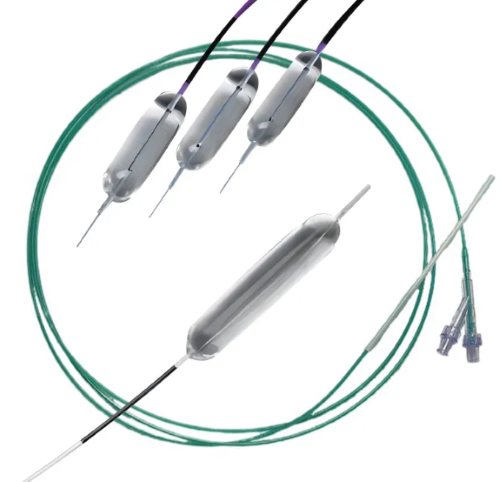Marker Bands For Medical Devices: A Comprehensive Overview
Marker bands play an essential role in the design and functionality of medical devices. These small, yet necessary components are employed to enhance the visibility, tracking and operation of medical devices during procedures. In this article, the different types, their applications, quantified advantages and case studies are described.
What are Marker Bands?
Marker bands are small metal bands integrated into medical devices such as catheters, guidewires and other implantable devices. They are positioned strategically, typically near the tip, to improve visibility under imaging methods such as X‐ray, fluoroscopy or MRI. Marker bands allow the medical staff to track and position devices within the body with precision, which is crucial in minimally invasive operations and diagnostic procedures.
These bands are manufactured from radiopaque materials; that is, they block or absorb X‐rays to produce clear images on X‐ray or fluoroscopy monitors. Consequently, this capability enables verification of the device’s exact position, thereby optimising placement and reducing the risk of complications.

Common Types of Marker Bands
Marker bands are typically produced from several types of metals. Each material offers documented advantages in accordance with the specific requirements of the medical device.
a. Gold Marker Bands
Gold is selected for its excellent X‐ray visibility, biocompatibility and corrosion resistance. The high radiographic visibility of gold provides clear imaging during diagnostic and surgical procedures, which is essential for accurate operations. Gold marker bands are used in devices that require high precision, such as catheter-based systems, guidewires and stents. Furthermore, gold is known for its biocompatibility, thereby reducing the likelihood of an immunological reaction. However, gold is relatively soft, so it is not applicable for devices that require high mechanical strength.
b. Platinum Marker Bands
Platinum is employed because of its high X‐ray visibility and durability. In contrast to gold, platinum exhibits greater mechanical strength, making it suitable for devices subject to higher mechanical load. Platinum marker bands are frequently used in high‐performance medical devices such as catheters, stents and diagnostic equipment. Platinum also delivers excellent resistance to corrosion and oxidation, which is important for devices that remain within the body over extended periods. Given that platinum is relatively expensive, its use is generally confined to applications that justify the cost.
c. Platinum-Iridium Marker Bands
Platinum-Iridium marker bands are manufactured from an alloy of platinum and iridium. This combination provides improved durability, strength and radiopacity, making it suitable for medical devices used in demanding procedures. The addition of iridium increases the wear and corrosion resistance of the alloy, thereby rendering it appropriate for devices exposed to rigorous conditions, such as pacemakers and complex catheter systems. Platinum-Iridium is also highly biocompatible and stable, which facilitates accurate monitoring during medical procedures.
d. Stainless Steel Marker Bands
Stainless steel is a cost-effective and commonly used material, especially in devices where cost efficiency is a key consideration. Stainless steel offers adequate X‐ray visibility and is noted for its mechanical strength, making it suitable for a variety of medical devices. These marker bands are applied in guidewires, stents and catheters, where both visibility and strength are required. Although stainless steel does not achieve the same level of X‐ray opacity as gold or platinum, it presents a more affordable option for manufacturers and healthcare providers. The potential drawback is that stainless steel may corrode under prolonged exposure to body fluids.
e. Tantalum Marker Bands
Tantalum is a metal known for its high biocompatibility and outstanding corrosion resistance. This makes it suitable for use in medical devices that remain in contact with body fluids for extended periods. Tantalum marker bands are used in devices that require both high strength and visibility, such as implantable devices, stents and catheters. Tantalum is highly radiopaque, thereby ensuring that the marker bands are visible under X‐ray and fluoroscopy imaging. One key advantage of tantalum is its capacity to withstand harsh conditions without degradation, which is beneficial for long-term implants. However, tantalum is generally more expensive than stainless steel, and its use is typically restricted to devices in which the increased cost is justified.
Applications and Advantages
Marker bands are used across a broad range of medical applications, including diagnostic procedures, surgical interventions and implantable devices. Their primary function is to enhance the visibility of medical devices during imaging. This, in consequence, supports precise tracking and positioning.
- Catheters and Guidewires: Marker bands are incorporated in catheter systems and guidewires to aid the medical staff in accurately navigating and positioning these devices.
- Stents and Implants: These bands are frequently used in stents, pacemakers and other implantable devices to monitor their positioning and ensure proper operation.
- Diagnostic Devices: Marker bands are also found in diagnostic instruments, such as balloon catheters and electrophysiological catheters, which are employed for monitoring and diagnosing conditions.
By enabling more precise placements, marker bands contribute to a reduction in complications and an improvement in treatment outcomes.

Case Study: Platinum-Iridium Marker Band for Balloon Catheters
Background
A leading manufacturer of medical devices encountered a challenge in producing balloon catheters. These catheters are critical instruments in cardiovascular and peripheral vascular procedures, where precise positioning and visibility under imaging methods such as X‐ray and fluoroscopy contribute to patient safety and treatment success. After reviewing available materials and potential suppliers, the company’s team contacted a reliable solution provider: Stanford Advanced Materials (SAM), recognised for its high-quality materials and customised development capabilities. The objective was to identify a marker band material that integrated with the balloon catheter design, with emphasis on dimensional precision and X-ray visibility.
The Solution
SAM recommended the use of a Platinum-Iridium alloy for the marker bands. This material is noted for its high X‐ray visibility, mechanical strength and biocompatibility and is therefore appropriate for devices that require accurate imaging during procedures. Following detailed discussions, SAM provided the following customised specifications for the marker bands:
- Outer diameter: 0.024'', 0.029'' and 0.051''.
- Inner diameter: 0.022'', 0.027'' and 0.049''.
- Length: 0.039'' for all sizes, ensuring consistent positioning.
- Centring: A precision centring tolerance of 0.001'' to ensure uniform placement within the catheter unit.
The Outcome
The Platinum-Iridium marker bands improved the performance of the balloon catheters as follows:
- Improved Imaging: The high radiopacity provided clear X‐ray images, facilitating accurate catheter placement.
- Longevity: The corrosion resistance of the alloy ensured reliable long-term performance.
- Biocompatibility: The material reduced the risk of adverse patient reactions.
- Enhanced Outcomes: Accurate device positioning contributed to higher treatment success rates.
Conclusion
Marker bands are essential components in modern medical devices. They ensure improved visibility, precision and dependability during procedures. Stanford Advanced Materials (SAM) provides a variety of materials for marker bands, including Gold, Platinum, Stainless Steel and Tantalum, thereby allowing manufacturers to select the material that meets the requirements of their applications. Please contact us if you wish to discuss your requirements.

 Bars
Bars
 Beads & Spheres
Beads & Spheres
 Bolts & Nuts
Bolts & Nuts
 Crucibles
Crucibles
 Discs
Discs
 Fibers & Fabrics
Fibers & Fabrics
 Films
Films
 Flake
Flake
 Foams
Foams
 Foil
Foil
 Granules
Granules
 Honeycombs
Honeycombs
 Ink
Ink
 Laminate
Laminate
 Lumps
Lumps
 Meshes
Meshes
 Metallised Film
Metallised Film
 Plate
Plate
 Powders
Powders
 Rod
Rod
 Sheets
Sheets
 Single Crystals
Single Crystals
 Sputtering Target
Sputtering Target
 Tubes
Tubes
 Washer
Washer
 Wires
Wires
 Converters & Calculators
Converters & Calculators
 Write for Us
Write for Us

 Chin Trento
Chin Trento



